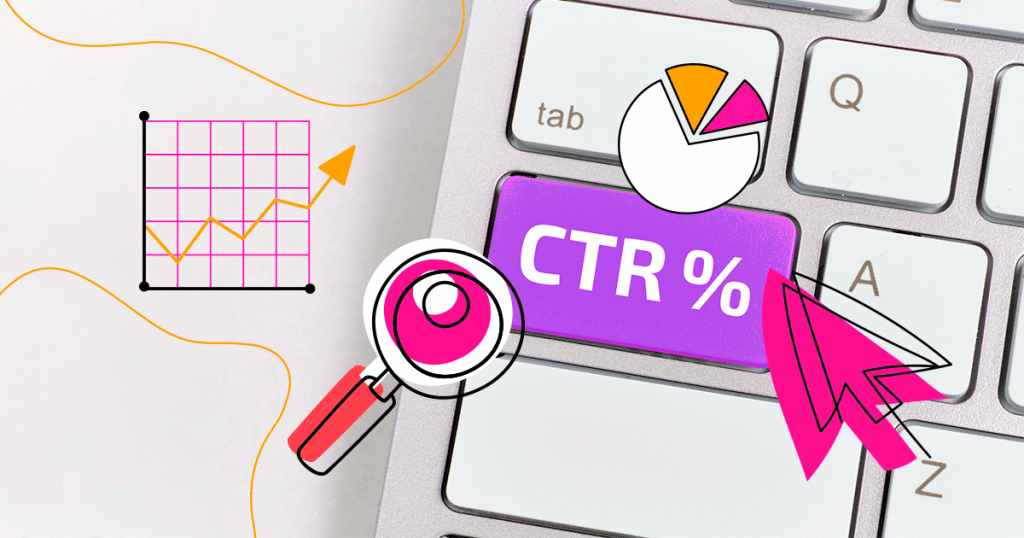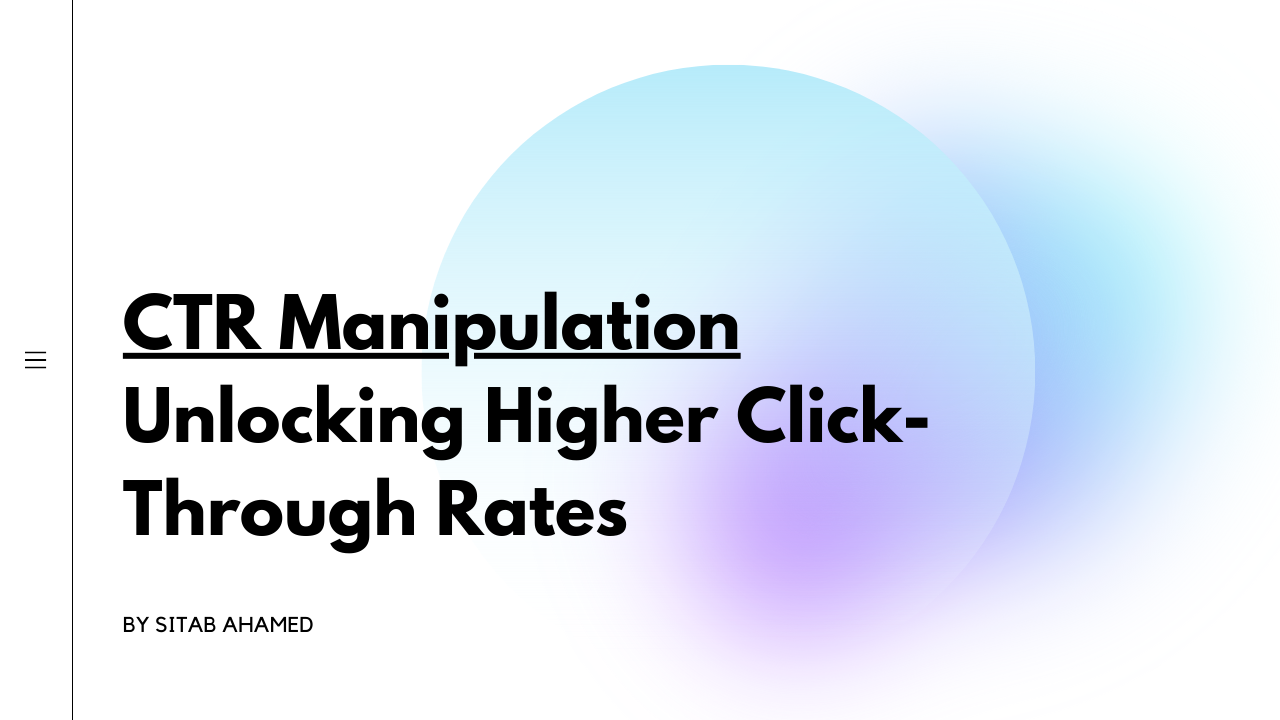Attain Improved Click-Through Rates with Proven CTR Manipulation Techniques
Wiki Article
Boost Your CTR With Cutting-Edge Control Techniques
In today's affordable electronic landscape, boosting your click-through rate (CTR) needs a nuanced understanding of user psychology and ingenious manipulation techniques. As we discover these cutting-edge methods, it ends up being apparent that the trick to opening greater conversion rates exists not just in the methods themselves, yet in exactly how they are applied.Comprehending User Psychology
Comprehending user psychology is critical for optimizing click-through rates (CTR), as it digs right into the inspirations and habits that drive individuals to involve with material. By comprehending the cognitive processes and emotional triggers that affect decision-making, marketing experts can create much more efficient methods focused on capturing individual passion.One key facet of user psychology is the concept of cognitive prejudices, which are methodical patterns in thinking that impact judgment and habits. As an example, the shortage principle suggests that customers are most likely to act when they perceive minimal accessibility. This principle can be leveraged to produce a feeling of urgency, prompting individuals to click an offer prior to it ends.
In addition, comprehending the duty of social proof is essential. Users commonly aim to the actions and viewpoints of others to inform their choices. Incorporating testimonies, evaluations, or user-generated content can enhance reliability and encourage involvement.

Crafting Engaging Headings
Crafting engaging headlines is essential for capturing customer focus and driving click-through prices. A well-structured headline works as the portal to your material, using a concise sneak peek that attracts customers to engage even more. To produce impactful headings, emphasis on quality and significance. Make sure that your headlines mirror the material properly, setting clear assumptions for viewers.Incorporating actionable language can considerably enhance a headline's efficiency. Verbs that recommend an activity, such as "uncover," "increase," or "discover," create a feeling of necessity and encourage customers to take immediate action.
By straightening your headlines with usual search questions, you raise the possibility of showing up in search outcomes, thus enhancing presence. In recap, an attentively crafted heading is a vital device for enhancing customer interaction and driving higher click-through rates.
Making Use Of Psychological Triggers
Emotional triggers play a vital duty in influencing customer actions and can significantly improve click-through rates. By tapping right into the feelings of your target market, you produce a more extensive link that fosters engagement and drives action. Understanding the numerous emotional triggers-- such as worry, happiness, surprise, and trust fund-- allows marketers to tailor their messaging strategically.As an example, stimulating feelings of fond memories can reverberate deeply with target markets, urging them to click material that advises them of cherished memories. Integrating aspects of wit can lighten the state of mind, making your web content more attractive and shareable. On the various other hand, fear of missing out (FOMO) can compel customers to click on promos or offers, as they do not desire to miss out on a possibility.
To efficiently make use of psychological triggers, online marketers should make sure that their material lines up with their audience's values and passions. Crafting narratives that reverberate mentally can boost relatability, making your campaigns a lot more impactful. By comprehending and leveraging these psychological responses, companies can produce compelling phone call to action that reverberate with customers, ultimately causing higher click-through prices and enhanced engagement with their web content.
Carrying Out Seriousness Methods
Developing an emotional connection is just one part of driving user interaction; carrying out necessity methods can further boost click-through rates by triggering immediate activity. Urgency techniques take advantage of the emotional principle of scarcity, making users feel they need to act rapidly to stay clear of missing out on important opportunities.One reliable approach is to use time-sensitive language, such as "restricted time offer" or "only offered today." This produces a sense of stress that urges customers to click before the chance vanishes. Furthermore, incorporating countdown timers on touchdown pages or advertising emails can aesthetically reinforce this necessity, compelling individuals to act quickly.
One more strategy involves highlighting minimal supply schedule. Expressions like "only 3 left in supply" or "selling out fast" can activate a concern of losing out, triggering instant action. Clear and strong call-to-action switches, such as "Grab Yours Now" or "Insurance claim Your Place," can further boost this impact by directing customers towards the preferred action.
Integrating these necessity techniques into your advertising and marketing strategy not only promotes a feeling of immediacy yet additionally considerably boosts user engagement and click-through rates, ultimately driving better conversion outcomes.
Studying and Optimizing Results
To successfully improve your click-through prices (CTR), it is vital to assess and maximize outcomes constantly. Begin by gathering data from different sources, consisting of website analytics, A/B testing, and individual responses. These insights will certainly assist recognize which strategies resonate most with your audience.
Following, concentrate on key efficiency indicators (KPIs) such as click rates, bounce rates, and conversion prices. By recognizing these metrics, you can determine patterns and patterns that inform your choices. For instance, an abrupt decline in CTR may indicate the demand for material reevaluation or layout adjustments.
Additionally, section your audience to tailor your strategies much more exactly. Different demographics might respond uniquely to your projects, so tailoring your messages can dramatically impact involvement.
Implement iterative testing to refine your strategies based upon empirical proof. CTR Manipulation Press Release. Trying out variations in headlines, phones call to activity, and visuals while monitoring their performance carefully
Verdict
In final thought, enhancing click-through prices demands a complex technique based in psychological principles. Employing emotional triggers, seriousness strategies, and well-crafted headlines can significantly affect individual actions. By comprehending the underlying motivations of the audience and purposefully executing these approaches, marketers can cultivate much deeper involvement and drive conversions. Constant analysis and optimization of results will certainly make certain these approaches stay efficient, adapting to developing customer preferences and market dynamics.
Emotional triggers play a crucial role in affecting customer behavior and can significantly boost click-through prices. By understanding and leveraging these emotional responses, businesses can produce compelling calls to action that reverberate with individuals, eventually leading to greater click-through rates and enhanced involvement with their content.
Report this wiki page